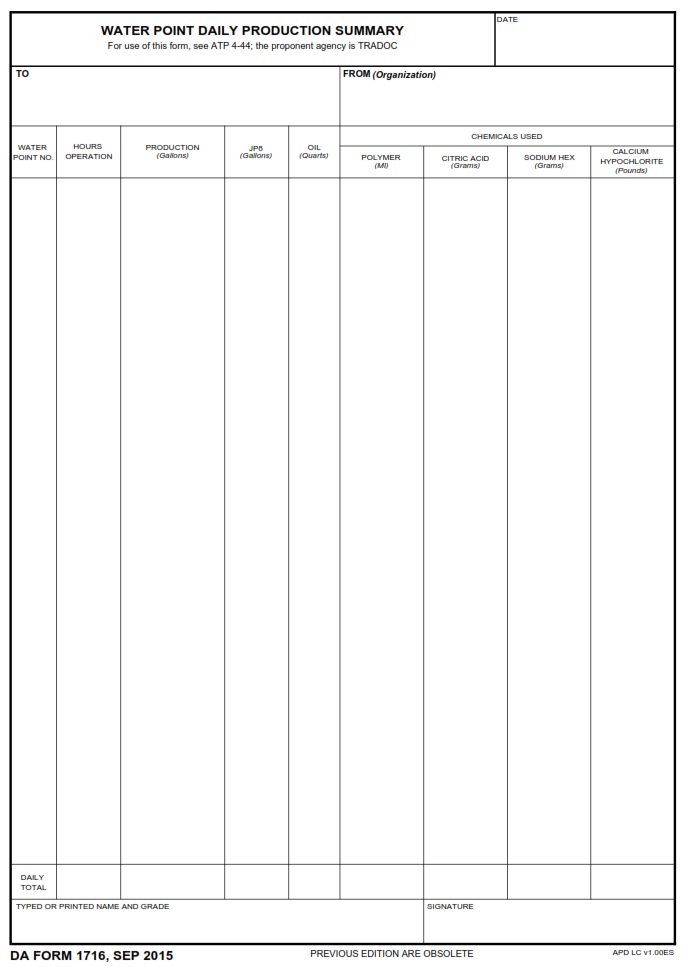DAFORMS.NET – DA FORM 1716 – Water Point Daily Production Summary – The DA Form 1716, Water Point Daily Production Summary, is an important document used by the U.S. Army to track water resources on a daily basis. It provides a concise and comprehensive record of where water is being used, who is using it, and exactly how much is being produced.
This form is essential for making sure that there is an adequate and reliable supply of water for personnel, equipment, and operations. It also serves as an important tool for compliance with environmental regulations.
Download DA FORM 1716 – Water Point Daily Production Summary
| Form Number | DA FORM 1716 |
| Form Title | Water Point Daily Production Summary |
| Published | 09/01/2015 |
| Prescribing Pub | ATP 4-44 |
| File Size | 36 KB |
DA FORM 1716 (9492 downloads )
What is a DA FORM 1716?
This article will discuss the DA Form 1716, known as the Water Point Daily Production Summary. This form is an important component of military water management, as it serves to both reports on and tracks daily water production from various sources.
It is used in both training and operational environments and is a fundamental tool for managing water resources for soldiers in the field. The DA Form 1716 captures and provides important information regarding the freshness, quality, and quantity of water produced each day.
Where Can I Find a DA FORM 1716?
The United States Army relies on the DA FORM 1716 to track and document water point production. This form provides a daily summary of a water point’s production and is used to ensure an adequate supply of water for soldiers and their equipment.
The form is important in ensuring that water sources are being managed responsibly, as well as providing an audit trail for the amount of water used on a daily basis. Accurate completion of the DA FORM 1716 is essential in order to effectively manage military water points.
DA FORM 1716 – Water Point Daily Production Summary
The DA Form 1716, or Water Point Daily Production Summary, is an important document used by military personnel and their supporting teams to track and monitor the water production of a given location.
It provides an overview of the total amount of water produced daily and can be used to identify areas where additional resources are needed. Moreover, it can help ensure that all units have access to a reliable and safe source of drinking water.
